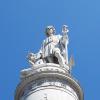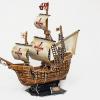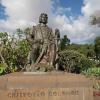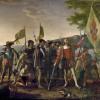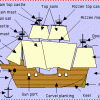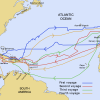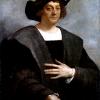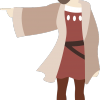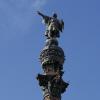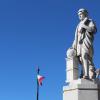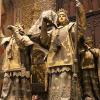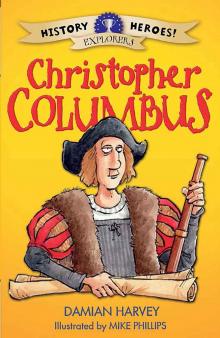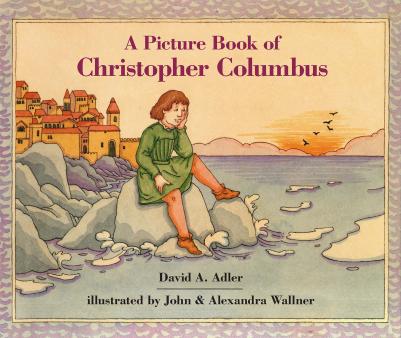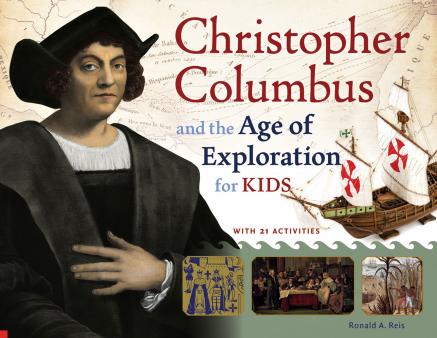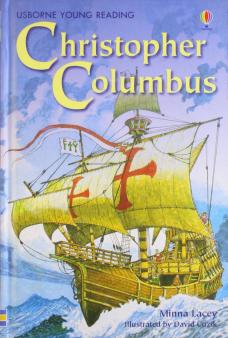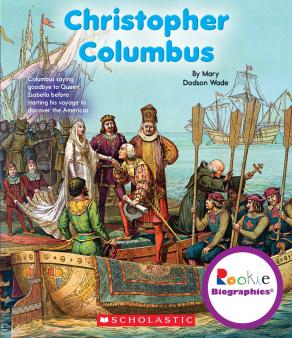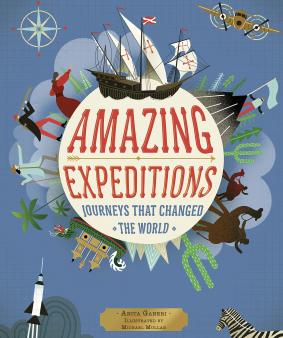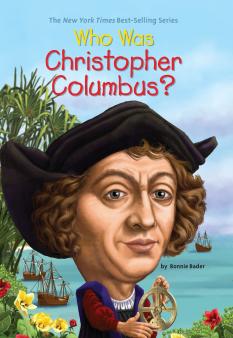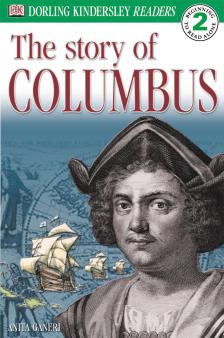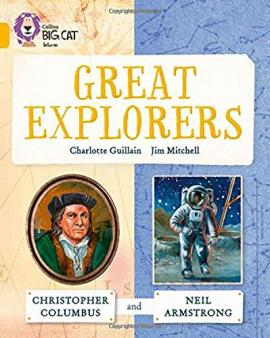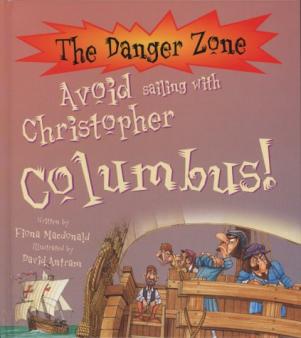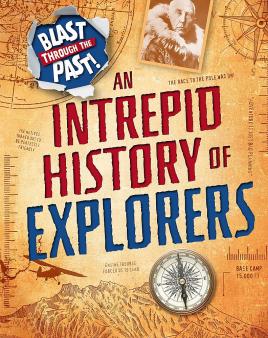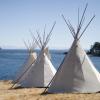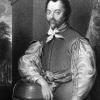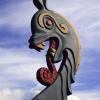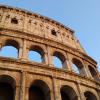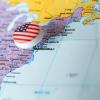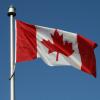Christopher Columbus
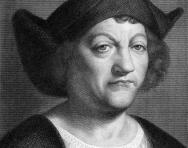
Christopher Columbus was an Italian navigator and explorer whose voyages to the Americas led to the Spanish colonisation of the New World.
He was the first European to land on the South American mainland.
Top 10 facts
- Columbus did not discover the Americas. An estimated 100 million people were living there already, a number roughly equal to the population of Europe at that time. The first European to reach the North American coastline was the Norseman Leif Ericson who landed in Newfoundland c1000 AD.
- People in Europe wanted to find a new route to the Indies, which was the name they gave to the Far East. Since the fall of Constantinople in 1453 the old Silk Route, along which silk, spices and other luxury items had been traded for centuries, had become difficult and costly to use.
- Columbus hoped to find a new route east. He believed he could do this by sailing west. When he landed in the Americas he was convinced he was actually in the East Indies and so called the native people Indians.
- Columbus approached the monarchs of Portugal, England, France and Spain seeking support for his plan. Finally Ferdinand and Isabella of Spain agreed to back his voyage of exploration.
- Columbus left Palos in Spain on 3 August 1492 with ninety men and three small ships, the Nina, the Pinta and the Santa Maria. Their first stop was the Canary Islands where they collected supplies before settling out across the Atlantic on 6 September of the same year.
- Land was first sighted on 11 October 1492 and on 12 October Columbus landed on an island in the Bahamas which he called San Salvador.
- The second voyage on 24 September 1493 was made by 17 boats with 1200 men. The aim of the voyage was to colonise the new discoveries and convert the native people to Christianity.
- Columbus made four voyages to the New World. He explored the Greater and Lesser Antilles, Venezuela and central America.
- The native peoples of the Americas were treated very cruelly by Columbus and his men who exploited and enslaved them. Allegations of mismanagement on Hispaniola led to Columbus being returned to Spain in chains in 1500 and being stripped of his governorship.
- It was Amerigo Vespucci who realised that a new continent had been discovered, so the Americas were named after him rather than Columbus.
Timeline
- 1451Columbus born in Genoa, Italy

- 1453Fall of Constantinople
- 1465Columbus makes his first sea voyage

- 1479Marries Felipa Perestrello y Moniz
- 3 August 1492Columbus leaves Palos in Spain for first voyage to Americas
- 12 October 1492Lands in Caribbean
- 15 March 1493Returns to Palos, Spain
- 1493-96Second voyage
- 1498-1500Third voyage
- 1502-04Final voyage
- 1506Columbus dies in Valladolid, Spain
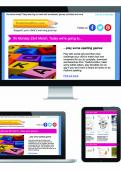
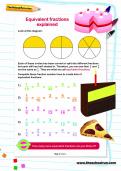
Boost Your Child's Learning Today!
- Start your child on a tailored learning programme
- Get weekly English & maths resources sent direct to your inbox
- Keep your child's learning on track
Did you know?
- Columbus never set foot on the North American mainland.
- Columbus knew that the earth was round but he believed it to be much smaller than it actually is.
- The Santa Maria sank on Christmas Day 1492. Columbus left 39 men behind on the island of Hispaniola. When he returned to rescue them a year later, the men were all dead.
- Ferdinand and Isabella were the parents of Catherine of Aragon, first wife of Henry VIII.
- No paintings of Columbus exist from his lifetime.
Look through the gallery below and see if you can spot the following:
- A statue of Christopher Columbus in Genoa, Italy
- A model of the Santa Maria
- A statue of Christopher Columbus in Madeira
- Painting showing Columbus landing in the Americas
- Diagram of a ship
- Map of the route taken by Columbus on his four voyages (Credit: Phirosiberia via Wikipedia)
- Posthumous portrait of Columbus
- An illustration of Columbus
- The Christopher Columbus monument in Barcelona
- The Christopher Columbus statue in Baltimore, USA
- The tomb of Christopher Columbus in the Cathedral of Seville, Spain
Gallery
About
Christopher Columbus was the oldest child of a family of weavers and woollen merchants from the Italian port of Genoa. His family were respectable but they were not wealthy. From an early age Columbus was obsessed with the sea and he began his sailing career when in his teens. He visited many parts of Europe and the coast of Africa, encountering pirates and shipwreck along the way. He also developed a strong interest in map-making and navigation and followed the latest theories and discoveries closely. He became an expert at dead reckoning and interpreting weather patterns. He was personally ambitious, working to gain access to influential people and to the royal courts of the time.
Columbus believed that he had been chosen by God to achieve extraordinary things. This self-belief and his bravery enabled him to succeed where others, more timid than he, had failed. Overcoming the reluctance of his crew he insisted on sailing on where more cautious seafarers might have turned back.
Despite his genuine wish to convert the natives he encountered to Christianity, his desire for gold and other treasures – to persuade the Spanish Monarchs that his discoveries were significant and no doubt for his own personal enrichment – seems to have been more important to him. This led him to kidnap, enslave and treat with brutality the people he encountered.
There were allegations that Columbus made a poor Governor, that he was cruel and incompetent and had exceeded his powers. He denied the allegations, claiming that they were lies made up by jealous enemies. It seems likely that there was genuine cause for complaint and that some bad decisions were made, but also that the problems and situations Columbus faced were unique and complex. The decision of the Spanish Crown was that he should be largely cleared of the charges but not restored to his former position. Columbus was bitter about this, believing he had been cheated of his rightful reward.
Columbus’s explorations brought about the great era of Spanish and subsequent European colonisation of the Americas. The impact for the Americas and their ancient cultures was devastating. Millions were wiped out by diseases such as smallpox and syphilis against which they had no immunity. Others were murdered, enslaved and brutally treated by Europeans obsessed with gold and plunder. Their population was decimated, their culture brutally destroyed and their lands stolen.
The European powers benefited enormously from their new conquests as treasures from the "New" World poured into the "Old".
A range of new foods and materials such as corn, potatoes, tomatoes, cocoa and avocado were all imports from the Americas. Wheat, horses and other livestock were introduced from Europe to the New World.
Related Videos
Just for fun...
- Download lots of exploration-themed activities: create your own compass and globe, find out more about navigational instruments and identify the parts of a ship
- Try a Christopher Columbus quiz to show how much you've learned
- Christopher Columbus lost nine ships during his four voyages (in 1492, 1493, 1498 and 1502). Find out more about Columbus's lost ships with an interactive website
- Travel to the year 1492 to learn a BBC song about Columbus and another famous explorer, Ferdinand Magellan
- Christopher Columbus colouring pages
Best books about Christopher Columbus for children
Find out more
- Who was Christopher Columbus? Find out in a BBC Bitesize guide for KS1
- Read an introduction to the voyages of Christopher Columbus
- Christopher Columbus facts for kids from the Kiddle Encyclopedia
- Watch a BBC animated film for KS2 about Christopher Columbus' epic adventures to the Americas
- Information about Christopher Columbus from the National Maritime Museum
See for yourself
Visit the world’s largest maritime museum in Greenwich, south London
See images of Columbus and his voyages, but they might not tell us what he actually looked like – no portrait of Columbus drawn or painted from life is known to exist
Also see

Give your child a headstart
- FREE articles & expert information
- FREE resources & activities
- FREE homework help
